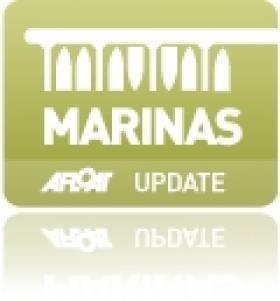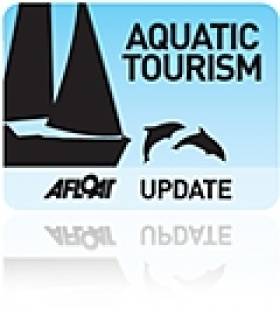Displaying items by tag: Sail West
#Marinas - Minister of State Joe McHugh will officially open the new €1.3 million Bunagee Marine Development on the Inishowen Peninsula tomorrow afternoon (Friday 9 June).
The new safe haven for coastal cruisers, including a breakwater and pontoons to accommodate 15 vessels, was developed by Donegal County Council as part of the major cross-border project Sail West.
It also forms part of a county-wide strategy to grow Donegal’s necklace of coastal tourism infrastructure and promote the county as a top marine destination in Europe, under the MalinWaters brand shared with Sligo, Northern Ireland’s maritime counties and Western Scotland.
Ahead of the marina's official opening, Donegal County Council Cathaoirleach Terence Slowey said: “We have a wonderful marine tourism product here in Donegal and the new Bunagee Marine Development is a great addition to our existing infrastructure.
“Situated close to the beautiful village of Culdaff, Bunagee is an ideal base that will give visitors the opportunity to explore the Inishowen Peninsula and the county.”
Minister McHugh will attend the official opening at Culdaff on Friday 9 June at 2.30pm.
The project was funded by the European Union’s INTERREG IVA Cross-border Programme managed by the Special EU Programmes Body. It was constructed by Deane Public Works, and Doran Consulting was awarded the contract as the consultant engineers.
New Facilities for Stranraer Marina Hoped to Boost Numbers
#MARINAS - The new shore block at Stranraer Marina is the latest project to benefit from the Sail West initiative across western Scotland, Northern Ireland and the northwest coast of Ireland.
As the Galloway Gazette reports, the new waterfront building comprises a permanent harbour office, coastguard base, showers and toilets, as well as a community education room.
“The ongoing development of the marina is key to branding Stranraer as a marine leisure destination," said local councillor Roberta Tuckfield.
"Plans to add more pontoons and another breakwater should bring in additional pleasure craft, increasing tourism numbers benefiting the whole town.”
The marina improvements have been made with the goals of boosting the number of marine leisure users in Stranraer, fitting in with Sail West and its cross-border MalinWaters marine tourism brand across the channel.
Sail West is an international scheme, headed by Donegal County Council and Larne Borough Council, which aims to encourage mariners to enjoy the North Channel coastlines of Scotland, Ireland and Northern Ireland.
Other projects recently supported under the rubric of the Sail West initiative include the new coastal marina facility at Ballycastle Harbour in north Antrim and this summer's Clipper Festival in Derry.
The Galloway Gazette has more on the story HERE.
New Study for 200–Berth Marina at Portush Harbour
#PORTRUSH – A study of Portrush harbour in County Antrim is being carried out to investigate the feasibility of creating a marina facility of up to 200 berths in the Northern port. The study is sponsored by the Sail West project which aims to promote sailing tourism between the west of Scotland and Northern Ireland and Donegal. The small harbour at Portrush is usually busy with small pleasure and fishing boats in the summer season. The nearest marina to Portrush is the 74-berth Ballycastle marina, 17 kms away, that is in full use by local fisherman and yachtsmen alike.
View Larger Map
Ireland Proves Inspiring for Scottish Sail Tourism Guide
#AQUATIC TOURISM - Scotland looks to Ireland for inspiration in growing its sailing tourism industry, a new report shows.
Tourism Intelligence Scotland's comprehensive Sailing Tourism in Scotland guide outlines opportunities for businesses already involved in sailing, as well as those willing to dip a toe into an area with much potential for growth.
Among various case studies, the guide points to the Sail West initiative headed by Donegal County Council, which aims to link the coastlines of Northern Ireland, north west Ireland and Scotland and develop the tourism infrastructure between the regions.
It also notes the initiative's MalinWaters brand, which aims to support tourism businesses with information on the latest products and services, and provide opportunities to share knowledge and best practices.
The Sailing Tourism in Scotland guide is available as a PDF to read or download HERE.

































































